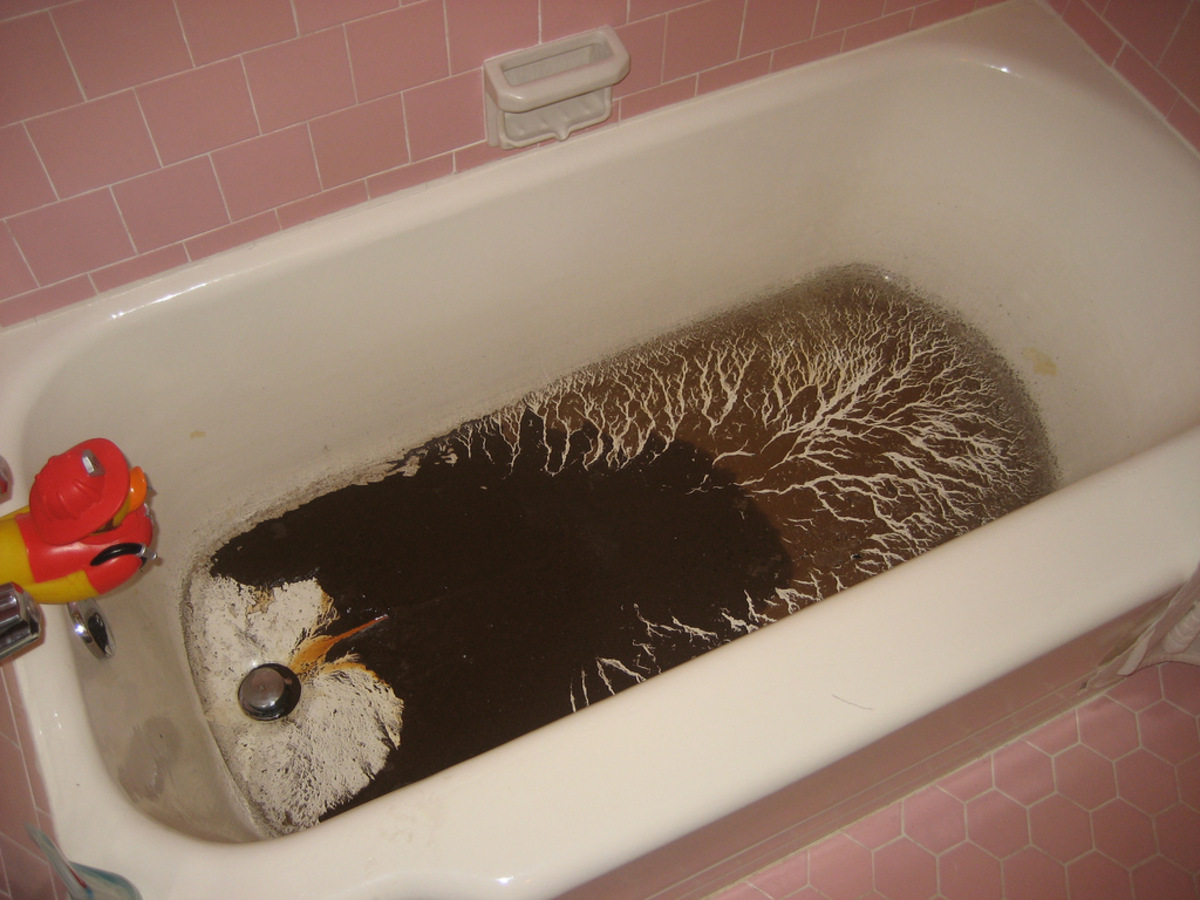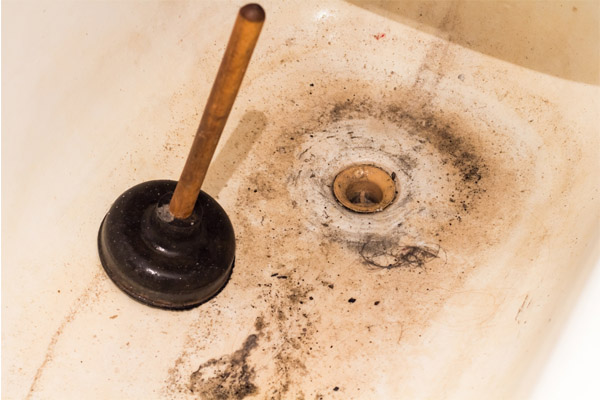Uncovering the Causes of Drainage Backflow in the Bathtub
Uncovering the Causes of Drainage Backflow in the Bathtub
Blog Article
Do you find yourself on the lookout for facts concerning Why sewage is coming up through your bathtub?

Sewage backup in the bath tub can be a stressful and unsanitary issue for any type of property owner. Not only is it bothersome, yet it additionally presents major health dangers and shows underlying problems with the plumbing system. Understanding why sewer is turning up with the bath tub is critical for taking proper activity to address the issue properly.
Introduction to the Problem
Understanding the Trouble
When sewer draws back up right into the bath tub, it's a clear indicator of an issue with the water drainage system. The wastewater that should be moving far from your home is instead discovering its back into your living space, which can cause substantial damages and carcinogen.
Potential Causes
Several factors can contribute to sewage backup in the bathtub. From blockages in the sewage system line to concerns with the plumbing framework, recognizing the source is crucial for locating an option.
Typical Reasons for Sewer Backup
Obstructions in the Drain Line
One of the most common reasons for sewage backup is a blockage in the sewer line. This can happen as a result of the buildup of debris, oil, or foreign objects in the pipes, preventing correct circulation and causing sewage to support into your tub.
Tree Root Invasion
Tree origins looking for wetness and nutrients can penetrate sewage system lines through little cracks or joints. With time, these roots can grow and increase, creating significant damage to the pipelines and leading to sewage backup problems.
Aging Framework
Older homes might have outdated plumbing systems that are much more vulnerable to deterioration, splits, and wear and tear. As pipes age, they become much more prone to leaks and blockages, increasing the likelihood of sewage backup events.
Heavy Rainfall or Flooding
Throughout durations of heavy rainfall or flooding, the sewer system may end up being overloaded with excess water, triggering backups and overflows. This can lead to sewage backing up into bath tubs and other components inside the home.
Wellness Dangers Associated with Sewage Backup
Contamination of Water System
Sewer back-up can contaminate the water system in your home, posturing a major wellness risk to you and your household. Direct exposure to contaminated water can cause gastrointestinal problems, skin infections, and various other illnesses.
Spread of Disease
Sewage consists of harmful bacteria, viruses, and bloodsuckers that can create a series of conditions, consisting of liver disease, cholera, and gastroenteritis. Coming into contact with sewer or infected surfaces places you in jeopardy of infection.
Mold Development
Wetness from sewer backup can develop optimal problems for mold and mildew development in your home. Mold spores can intensify breathing problems and create allergies in delicate people, making punctual clean-up essential.
Indicators of Sewer Back-up
Foul Odors
Undesirable smells rising from drains or components, particularly in the shower room, might show sewer backup problems. These odors are usually solid and relentless, signaling a problem that requires immediate attention.
Slow Draining Fixtures
Bathtubs, sinks, and toilets that drain slowly or not whatsoever could be experiencing sewage back-up. If numerous fixtures are influenced all at once, it's likely that the concern stems from an usual point, such as the major sewer line.
Gurgling Noises
Weird gurgling or bubbling sounds coming from drains when water is running somewhere else in the house are a measure of air entraped in the plumbing system. This air buildup can result from sewage backup and need to be explored promptly.
Immediate Actions to Take
Shutting Off Supply Of Water
In the event of sewer backup, it's essential to shut off the supply of water to prevent further contamination and damage. Find the major water shutoff valve in your house and closed it off up until the issue can be dealt with.
Getting In Touch With a Professional Plumber
Dealing with sewer backup is not a do it yourself job. Call a certified plumber with experience in handling sewage-related problems to assess the circumstance and execute essential repair work or cleanings.
Avoiding Contact with Polluted Water
Up until the sewer back-up is dealt with, prevent contact with infected water to stop the spread of bacteria and pathogens. Use safety equipment if you need to remain in the afflicted area and wash your hands completely afterward.
Safety nets
Routine Upkeep of Sewage System Lines
Set up routine examinations and maintenance of your drain lines to identify and resolve possible issues before they escalate right into major problems. This can consist of cleaning debris, examining for tree root breach, and repairing any kind of broken pipes.
Mounting Backwater Shutoffs
Think about installing bayou valves in your plumbing system to avoid sewage from receding right into your home during durations of heavy rainfall or flooding. These valves instantly close when water starts backing up, securing your building from contamination.
Proper Disposal of Family Waste
Avoid flushing anything apart from toilet tissue and human waste down the commode to stop obstructions and blockages in the sewer line. Dispose of grease, oil, and other household chemicals correctly to minimize the threat of plumbing issues.
Cleaning Up After Sewer Backup
Disinfection Procedures
Extensively disinfect and sterilize affected areas after sewage back-up to remove damaging microorganisms and protect against mold and mildew growth. Usage proper cleaning products and protective gear to guarantee safe and effective clean-up.
Repair of Impacted Areas
Repair any damages to floor covering, walls, or fixtures caused by sewer back-up. Depending upon the extent of the damages, you might need to change carpeting, drywall, or other products to restore your home to its pre-loss problem.
Why Is Water Backing Up in My Bathtub When I Flush My Toilet?
What to do about a sewer line clog
First, don’t bother with plunging. No amount of plunging will dislodge the clog in a sewer line. The clog is too far away. Plungers are for clogs in the toilet itself, not the sewer line. Plus, the most likely causes of a sewer clog are:
Tree roots Flushed toys or feminine products Grease buildup Those items don’t move easily. And in the case of tree roots, the roots need to be cut out of the pipe and the pipe will need to be repaired.
You’ll need a closet auger. A closet auger is a type of plumber’s snake with a protective cover to keep from scratching the delicate porcelain toilet. If the clog is further down, you may need to remove the toilet or use one of your cleanouts to get to the clog.
We also recommend doing a video inspection of the drain to ensure that the cause of the clog has been completely removed. Otherwise, you could have the same problem again in a few days or weeks.
https://mspplumbingheatingair.com/blog/why-is-water-backing-up-in-my-bathtub-when-i-flush-my-toilet

As an enthusiastic reader on , I was thinking sharing that piece of content was a good idea. Are you aware of anybody else who is intrigued by Why sewage is coming up through your bathtub? Take a moment to share it. I am grateful for being here. Please visit our website back soon.
Maintenance Sign-Up
Report this page